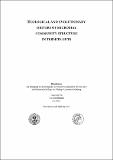Habitat selection and vertical inheritance drive archaeal community structure in arthropod guts

View/
Publication Date
2015Author
Carsten Dietrich, James Nonoh, Kristina Lang, Lena Mikulski, Katja Meuser, Tim Köhler, Hamadi I Boga, David K Ngugi, David Sillam-Dussès, Andreas Brune
Metadata
Show full item recordAbstract/
The arthropod gut is streamlined to anaerobically mineralize mostly plant-derived organic matter. In only five major arthropod groups (millipedes, scarab beetle larvae, cockroaches, and lower and higher termites) are considerable amounts of methane formed by methanogenic archaea at the end of this process. Bacterial communities in the guts of termites and cockroaches mirror major events in the evolutionary history of their host. Whether this is also true for archaeal communities or whether diet is the key factor is unknown. Here, we used both clone libraries and high-throughput sequencing to document that the archaeal community structure in arthropod guts and the phylogeny of archaeal lineages is dependent on the host group and to a lesser extent on diet. With the exception of lower termites, all major arthropod groups contained at least one group each of hydrogenotrophic and methylotrophic methanogens regardless of the host diet. Hydrogenotrophic methanogenesis is almost exclusively carried out by members of the genus Methanobrevibacter, whereas methyl reduction is accomplished by different genera of the orders Methanomassiliicoccales and Methanosarcinales. The occurrence of specific genera of these obligately hydrogendependent methylotrophs differs among the hosts, which indicated that host habitat selection is the major driving force for arthropod archaea. Analysis of the phylogeny of the most abundant archaeal lineages in the arthropod host gut revealed host-group-specific clusters of archaeal lineages. Since cocladogenesis was absent in the resulting phylogenetic trees, cospeciation could be excluded what indicates
